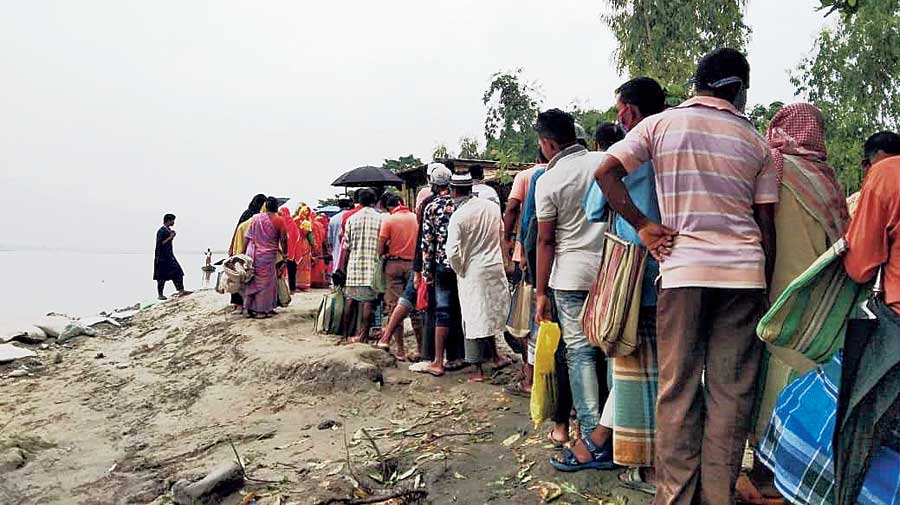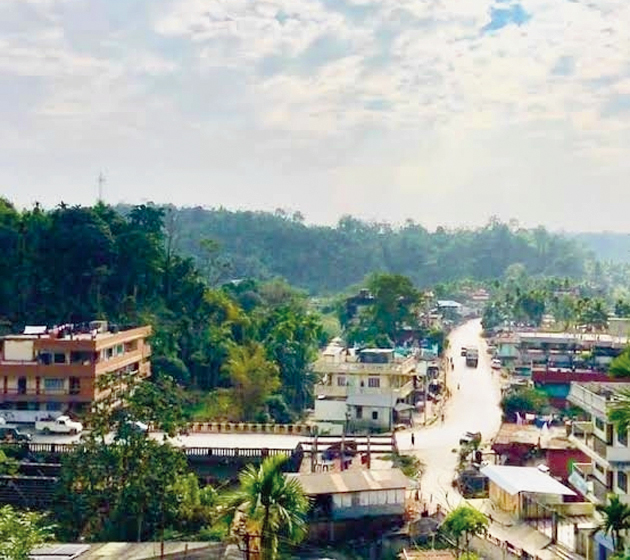Nazmul Haque of Daribas village in Cooch Behar district near the India-Bangladesh border prefers health centres in Mogolhat or Durgapur in Lalmonirhat district of the neighbouring country, especially during monsoon when the river Dharala swells.
In his village he often finds Bangladeshi hawkers selling various kinds of wares, including essential items, but hardly any vendor from Cooch Behar.
For years now, residents of two Indian villages Daribas and Jaridharala depend on Bangladesh for buying essentials or for health needs.
Gitaldaha in Cooch Behar on the other bank of the Dharala river, happens to be the first locality on Indian mainland for these villagers.
But crossing it during monsoon is quite a task, Nazmul said.
“There are many women in our village who have delivered their babies at health centres in Bangladesh,” he said.
Another resident pointed that even during dry seasons, the way to reach Gitaldaha was cumbersome.
When the river is thin, one has to walk over 3km along its dry bed, take a short boat ride, and get themselves screened by BSF jawans posted at Kashem Ghat — the spot on the Gitaldaha side where boats ferry them.
“Only then can we head for the market or a health centre or hospital in Gitaldaha. During monsoon, the river swells and we have to take the risky boat ride. This year, a large boat we had here had submerged. We are yet to take it out. The entire population is now dependent on two smaller boats. In this situation, it is always better to enter Bangladesh to get any item or medical treatment,” the resident said.
As most parts of the international border are riverine, there are no fences. Also, there is no water body on the other side towards Bangladesh. So, residents of these two villages — the total population is around 6,000 — can simply walk a few hundred metres to reach Mogolhat or Durgapur.
“People in Bangladeshi villages in Lalmonirhat district are aware of our situation. The Border Guard Bangladesh (BGB) personnel know our plight. None of them (the BGB) stops us if we carry a patient to their health centres. Also, we often find hawkers from their areas visiting our villages,” Mansur Ali Mian, another resident, said.
In fact, during monsoons, if the Dharala inundates low-lying areas of Daribas and Jaridharala, their residents get refuge at flood shelters of Bangladesh.
“It might sound surprising but this is the practice here for years now. When the river floods villages, what else can we do? We cannot head towards the Indian mainland,” added Mansur.
North Bengal development minister Rabindranath Ghosh admitted to the residents’ problems. “The Dharala river is so wide in that stretch and at times, they do not have any option but to go to Bangladesh. But if they have any problem with boats, we can sort it out in consultation with the district administration,” said Ghosh.













